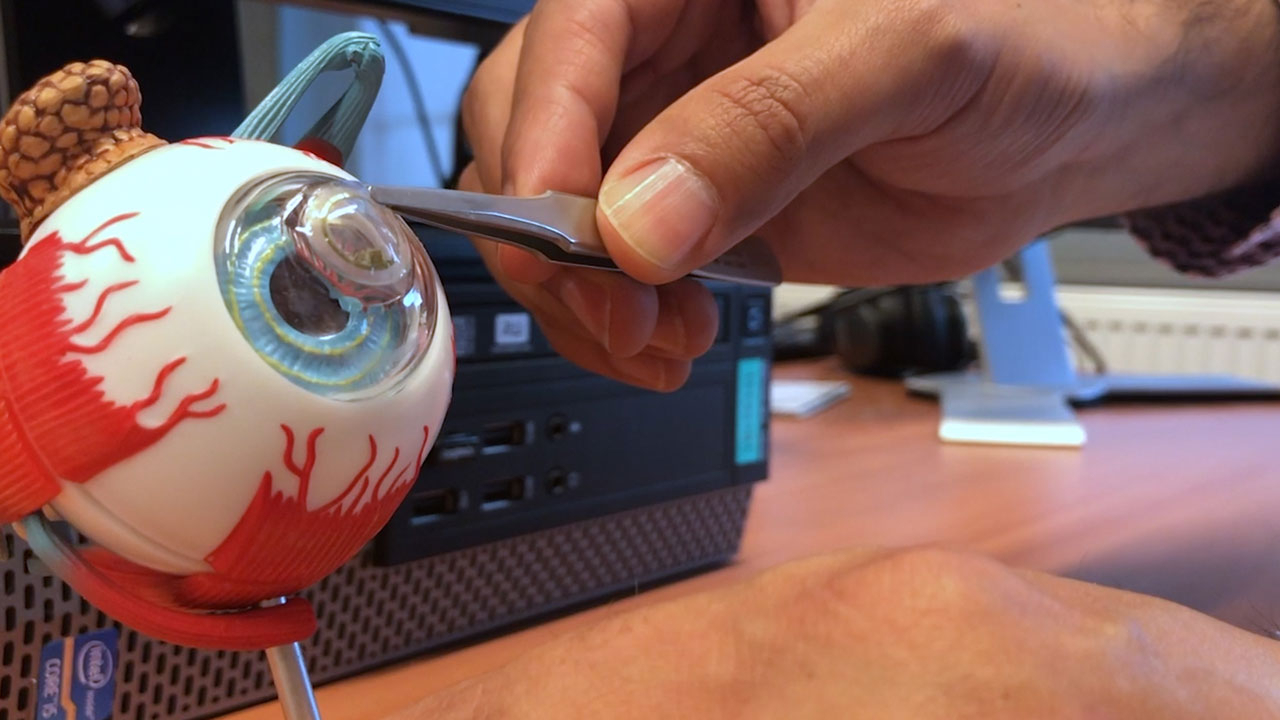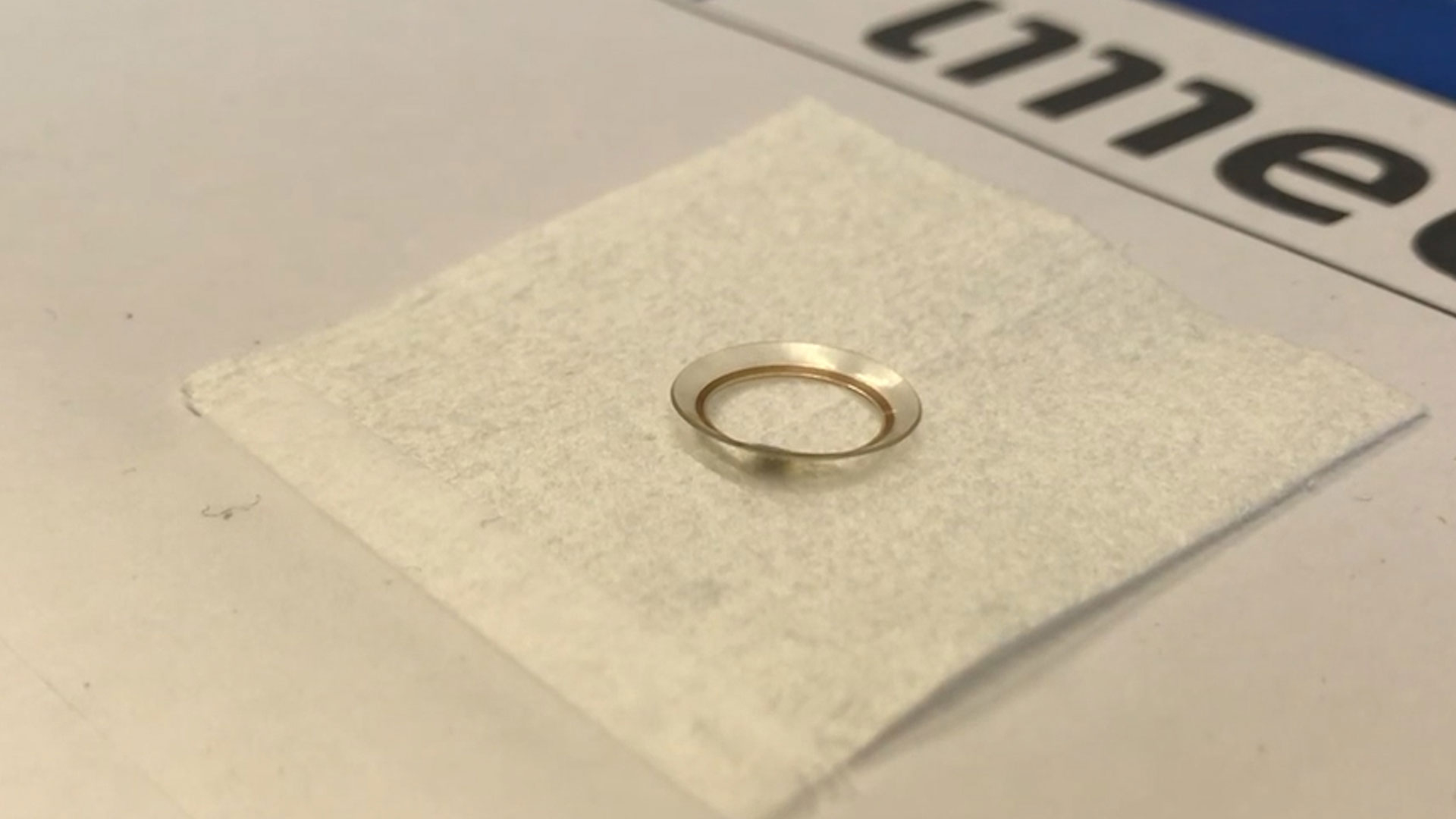
Wearables
11:43, 01-Dec-2018
Scientists in Belgium develop an electronic contact lens
Updated
23:04, 09-Dec-2018
By Jack Parrock
02:02

A futuristic new piece of technology developed at the University of Gent is the first step to regulating medical eye-care through special lenses.
The technology being developed in Gent might be almost as small as electronics can get, but it could be the start of a huge leap forward in science.
Dr. Andrés Felipe Vasquez Quintero took us through the labs at Gent University where researchers have been working on this project for more than three and a half years.
It has all been done in a so-called "clean room" where an elaborate air circulation system removed as much dust and air particles as possible. That also means full body suits and a wipe down of everything that enters the space.
The reason for this is because the layer of gold ring which makes up the electronic part of the prototype contact lens is 10 micrometers maximum in width. That's half the width of a human hair. If even the smallest dust particle gets in between the gold layers, it can ruin the process which is also costly.

The gold ring of lens electronics /CGTN Photo
The gold ring of lens electronics /CGTN Photo
There has been research elsewhere in the world which has managed to put electronics into solid material contact lens which are made from substances like silicone. This team says they're the first to be able to insert into hydro-gel which is what modern lenses are commonly made from and is far more flexible and allows oxygen to pass into the cornea of the eye.
Andrés Felipe Vasquez Quintero says, "The first use for this is to be able to have drugs inserted into lens which can be done already, but with our electronic device, we can regulate how much a patient is getting depending on their needs."
This is important for people suffering from conditions like Dry Eye Syndrome which affects around 10 percent of the world's population but 17 percent of people in China.
It's when an eye doesn't hydrate itself properly and can be agonizing for the sufferer.
Professor Herbert De Smet who also works on the project at Gent University says, "We're at the very beginning of a very exciting process. What we're doing is opening the door where others can work on different functionalities."
The team in Gent is working with Japanese contact lens maker SEED which will produce the part which deals with the focus prescription for users - the function of a normal contact lens.
This project has received millions of dollars in EU and private funding and as it enters into a medical trials stage it will require even more money.
The next stage of the research for the team is to find a flexible battery which can last much long and therefore increase the functionality of the electronics which they've been able to insert.
While the current transmitters in the electronic contact lens are very rudimentary, there will be ethical questions which arise as the technology develops and potentially gets linked to wifi networks.
"If you make something you want it to be safe, not being able to be hacked. Now the functionality we are targeting is, from an electronic or software point of view, very basic. But this will evolve and at a certain time these aspects will come into play," says Professor De Smet.
The project is currently in its infancy but it's a major leap forward in science.
Andrés Felipe Vasquez Quintero says, "This same technology can be applied for example to inter-ocular lenses or to other type of implants that can go into the brain or into the heart, or into different parts of the body."
The researchers hope the electronic contact lens could be a usable product on the market in just over two years' time.

SITEMAP
Copyright © 2018 CGTN. Beijing ICP prepared NO.16065310-3
Copyright © 2018 CGTN. Beijing ICP prepared NO.16065310-3